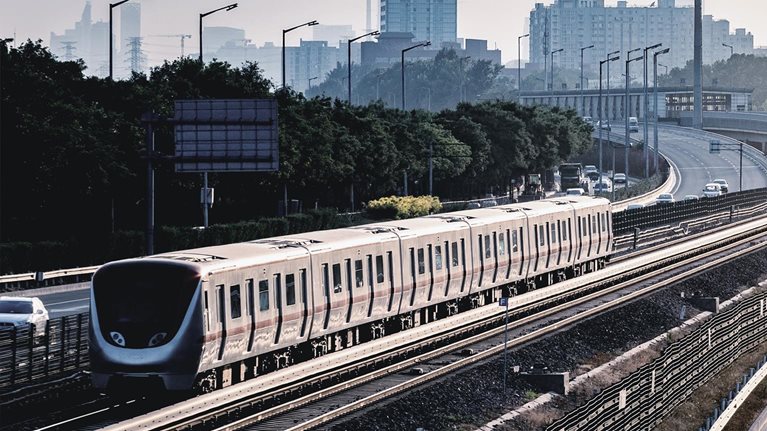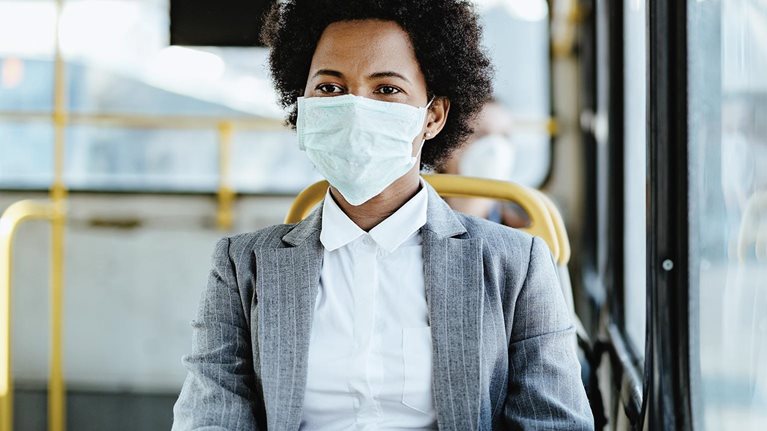Within a matter of months, the global coronavirus pandemic has disrupted economies and afflicted millions of patients around the world. With many governments instituting lockdown measures, people practicing physical distancing, and case counts continuing to mount in some cities, very few people are using shared modes of transportation—for instance, real-time ridesharing—and the industry has very quickly lost both passengers and profits.
To determine if the drop in shared mobility might persist over the long term, we researched the sector and examined data from the ongoing McKinsey Global COVID-19 Automotive Consumer Survey. The first two waves of this survey, which were conducted in May 2020, each included more than 8,000 respondents spanning seven countries.1 Our findings show that consumers are indeed wary of shared mobility, given the risk of viral infection, and mobility-service providers (MSPs) must take decisive steps to address their concerns. With the right strategy, they can make a strong comeback and potentially return to prepandemic service levels. Here’s a summary of our findings, as well as a playbook for moving to the next normal.
Shifting priorities in the age of COVID-19

The coronavirus crisis has triggered a dramatic shift in consumer priorities about mobility. In part one of our survey, 47 percent of respondents state that the time to destination was an important consideration before the pandemic; only 14 percent state that reducing the risk of infections was important (Exhibit 1). In the aftermath of the COVID-19 pandemic, the ability to reduce viral infection is now the most common consideration, cited by almost half of all respondents. The time to destination is cited as an important consideration by only 33 percent of respondents. As an indication that staying healthy remains top of mind for global consumers, that sentiment remained largely unchanged—at 45 percent—in part two of our survey, conducted two weeks later.
The new consumer concerns have had a significant impact on the perception of MSPs. Only 5 to 8 percent of our survey respondents think that carsharing, ridesharing, or shared micromobility are safe, from a health standpoint (Exhibit 2). Only 7 percent feel public transportation is safe. In contrast, 81 percent of respondents consider private vehicles safe. Given those safety concerns, people have changed their mobility patterns tremendously. For example, ride-hailing companies in multiple geographies have experienced 60 to 70 percent declines in passengers during the COVID-19 crisis.
Consumers may not always remain averse to shared mobility, however. In fact, people who want to avoid COVID-19 might eventually come to view ridesharing as a good alternative to more congested forms of mobility that make physical distancing difficult, such as public transportation.

To capture potential opportunities as economies gradually reopen, MSPs need to know how to react to the current challenges while preparing for the next normal. Moreover, they should be ready for not only the potential next waves of COVID-19 but also other infections that might occur. Acting quickly and having a plan tailored to specific regional markets could be important.
The recovery of MSPs is more than an economic concern. It has broader societal implications, since shared mobility can help reduce traffic congestion, air pollution, and greenhouse-gas emissions. The recovery of MSPs is also relevant to the OEMs and suppliers that create vehicles and components, since they may need to improve their designs to increase safety. City and local officials also have an interest in MSP recovery, since shared mobility could enhance life in other ways, such as making it easier to get around. To encourage MSP growth, officials must therefore monitor the industry closely and create appropriate regulations.
A playbook for mobility-service providers responding to a global crisis
We believe that MSPs can respond to the current COVID-19 pandemic and future crises by taking several actions split into three phases (Exhibit 3).

Within days, respond at once
MSPs have already taken immediate steps to respond to the COVID-19 crisis, and that model will serve them well if similar events occur in the future. As passenger demand plummeted and lockdowns challenged established work practices, MSP-industry leaders turned their immediate focus to surviving the turmoil without inflicting long-term damage on their businesses. Companies defined standard response protocols for different scenarios and implemented immediate safety measures, such as suspending pooled-vehicle services. They also helped keep their drivers financially solvent with support packages worth more than $10 million. By retaining drivers, companies can more quickly resume normal operations as lockdowns end.
Within weeks, cope with the crisis
As the number of COVID-19 cases decreases in some areas and countries begin to reopen, MSPs should find ways to return to normal operating conditions while maintaining safety. Although consumers perceive private vehicles as the most hygienic transport option, they aren’t available to everyone. In consequence, MSPs should ramp up marketing efforts, even though many people are still concerned about the safety of shared mobility. The message should be that ride-hailing and carsharing services are viable alternatives to private-car ownership and public transportation.
Companies may also encourage robust levels of utilization through other measures, such as converting taxis to delivery vehicles for pharmacies and other stores. Our survey shows the potential for revenue sources arising from leisure activities, since 45 percent of respondents can imagine using vehicles to connect safely with the outside world—including going to drive-in theaters, restaurants, and shopping centers.
In addition to deploying thoughtful marketing campaigns and, if necessary, implementing new business strategies, it is also critical for MSPs to deal with cash- and liquidity-management issues. Companies should quickly shutter businesses that remain unprofitable while also creating potential new revenue streams, such as those stemming from innovative business partnerships. For example, after a national supermarket chain was overwhelmed by demand for home deliveries, it partnered with a ridesharing company to make next-day deliveries of food and essentials for orders placed online. In another example, a public-transit agency is using a major mobility player’s mobile platform to give its users access to ridesharing on demand.
Months later, thrive in the next normal
Long after the COVID-19 crisis fades away, its memory will leave a lasting impact on consumers, whose personal and professional lives have been disrupted. Nevertheless, if MSPs can reimagine their business models, we believe that they have the potential to make a strong comeback. After the pandemic, as consumers resume everyday activities, such as dining out and going to the theater, ridesharing services might even surpass their previous levels of popularity. According to our survey, 15 percent of respondents expect to use ride-hailing services regularly after the pandemic; before the crisis, that figure was 14 percent.
The road to recovery might be a long one, however. Even in China, where the crisis is mostly under control, less than one-fifth of consumers in the second part of our survey say that they would consider ride hailing safe for their health—only a slight increase from the 15 percent reported in part one of the survey, conducted two weeks earlier. Despite these concerns, ride hailers in China are reporting early signs of recovery after seeing their number of passengers plummet in February 2020.
Would you like to learn more about the McKinsey Center for Future Mobility?
With so much uncertainty in the market, MSPs would be wise to prioritize the right kinds of services for different regions and allocate resources accordingly. That may even include entering some nonmobility businesses, such as grocery e-commerce and package delivery, for added growth. Established players and new entrants have the opportunity to grow through M&A. In fact, the industry already shows signs of accelerated consolidation via M&A, particularly in the micromobility space. For instance, a European micromobility provider acquired an e-scooter business earlier this year, while a US-based mobility company acquired a global transportation company’s bikesharing brand.
Safety is—and will remain—paramount
Throughout all phases of the pandemic, safety will be a top priority. During the first days of the crisis, MSPs have implemented a range of quick safety improvements that will persist, and they may soon add other measures. Those efforts span the entire customer journey (Exhibit 4):
- Before the trip. Globally, most providers canceled their pooled services because of the pandemic. When customers book a trip, service providers notify them that their cars are freshly sanitized and ventilated.
- During the trip. MSPs require all drivers and passengers to wear masks. Image-recognition technology can be used to verify that the drivers remain masked throughout the journey. In addition, separating driver and passengers with a protective sheet is a critical measure for MSPs: nearly 30 percent of our survey respondents said that such measures would increase their likelihood of booking a ride. Other safeguards include regularly opening windows to improve ventilation.
- After the trip. MSPs shouldn’t give customers the option to pay cash, since contactless digital payments are perceived as safer. Data management is important for MSPs; they may need to trace contacts in case of infections.
- Between trips. MSPs need to sanitize cars between trips. Our survey respondents see this as the most important measure the industry can take to protect them, with 52 percent saying that sanitization would increase their likelihood of using ride-hailing services.

The mobility industry can learn from the challenges presented by the COVID-19 crisis and make a strong recovery. However, players must first continue to overcome the immediate challenges presented by the crisis and make additional progress. There will be no going back to prepandemic life, so companies must look ahead and prepare to compete in the next normal. With the “firefighting” phases of the first weeks and months of the crisis now in the past, they must rethink their strategies and focus on partnerships, portfolio optimization, and enhanced vehicle design to enable safe mobility going forward (see sidebar, “Safe vehicle design”).
Preparing for the next normal isn’t only relevant to MSPs. OEMs and suppliers have an opportunity to work with MSPs to promote thoughtful design of purpose-built vehicles that are safer for passengers. That effort can be part of a larger shift toward more customer-centric vehicle design. Some of the rideshare cars’ design changes, such as new, more hygienic interior materials, might also be desirable in private vehicles.
In other shifts related to the next normal, the need for better protection may create a new after-sales market that involves retrofitting hygiene solutions to current cars. In addition, insurance companies might need to prepare by devising new policies that consider the risk of infections. Finally, local governments will need to design the mobility concepts that take us into the next normal—such as those that address passenger health and safety. They must also develop regulations for a staged return to greater mobility after lockdowns end, including mobility in public transportation, carsharing, and ridesharing.
We believe that shared mobility can recover strongly from the current crisis, but it’s crucial for leaders to determine which protective measures are most effective and deploy them accordingly. Our hope is that the insights in this article will help government and business leaders devise smart, targeted strategies to combat future outbreaks of infectious diseases.



